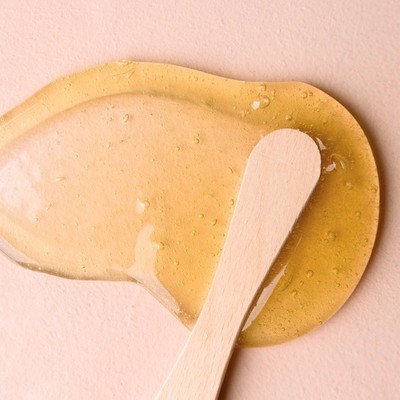
What You Need To Know About Sugaring
Sugaring’s Been Around For Centuries
Sugaring may seem like a new concept, but it’s been used as a hair removal method for centuries, explains Nilam Holmes, founder of Eyebrow Queen. “TikTok has brought sugaring to life this year – and it’s quickly become popular due to its long-term benefits such as less pain and aggravation to sensitive skin – but it was actually developed by ancient Egyptians who considered a hairless body synonymous with class and prosperity.”
It’s All-Natural
As the name suggests, sugaring does contain sugar. In fact, the paste used during a sugar wax contains just three ingredients: lemon, sugar and water. There are no cloth or plastic strips involved, making it a natural alternative and one that’s more sustainable when compared to traditional wax. Tanja Westendorff, founder of Sugaring London, which has two salons in the capital, says it’s this simple approach that makes sugaring unique. “When I opened the first salon, people thought I was opening a bakery – sugaring just wasn’t something people had heard of. But there’s a huge advantage to using sugar over traditional wax. Above all, sugaring combines two treatments in one – it removes hair and gently exfoliates dead skin cells, leaving the skin smooth and glowing. Plus, it’s also vegan-friendly.”
The Technique Is Unique
Sugaring paste is soft enough to penetrate your pores, where it adheres to individual hairs and pulls them out from the roots. Your therapist moulds the paste in their hands to warm it up before smoothing it on your skin – to remove, the paste is flicked back, going with the growth, pulling up hairs as it goes. The same ball of paste is used throughout a treatment, repeating this process until each area is fuzz-free. Plus, a bigger surface area can be covered at any one time compared to traditional wax, making the treatment speedier and minimising the pain factor.
Pain Is Minimal
Sugaring works to remove hairs from the root without disturbing the surrounding skin, Nilam explains, so it tends to be gentler than waxing with less irritation. “When waxing, the mixture is applied in the same direction as hair growth and then removed in the opposite direction. However, with sugaring, the sugar paste is applied against the direction of hair growth and removed in the direction of hair growth with small yanks. Plus, the paste is only heated to body temperature, meaning there’s no risk of burning and it’s more comfortable, explaining why it’s also a particularly good hair removal method for sensitive areas like the upper lip and intimate areas.”
…And It Provides A Smoother Finish
“Unlike waxing, sugaring only pulls out the hairs and doesn’t disturb the surface of the skin,” says Tanja. “Hot wax, for example, attaches to both the hair and skin, pulling skin cells with it as it’s removed, which can cause redness and swelling. Sugaring is a much gentler method of hair removal as the paste doesn’t stick to your skin – it only attaches to the hair.”
Those Prone To Ingrown Hairs Will Love It
If regular waxing leaves you bumpy and red with multiple ingrown hairs, sugaring could be worth a try. As the sugar paste is removed in the same direction as hair growth, it minimises the chances of an ingrown hair. “Plus, after you’ve been sugaring for a while, your hair growth will naturally slow, meaning you can go longer between appointments,” Nilam adds. “This is because when the hair gets removed in its entirety, i.e., from the root, it grows thinner over time. For the best results, book in when your hair is 1/8 inch to ¼ inch in length, as this will help to slow down the regrowth.”
It Can Be Done Everywhere
Similar to waxing, sugaring can be done anywhere from your eyebrows to your bikini area to your legs. But of all the treatment options on the menu, Tanja says that Brazilian and Hollywood treatments are by far the most popular service.
After-Care Is Important
Post-appointment, the experts say you should avoid anything that may irritate the area you’ve just had sugared. “It’s best to avoid any form of strenuous exercise for at least 24 hours post treatment,” Tanja advises. “Sweat and bacteria are prime suspects for triggering an ingrown hair and irritation, so for the best and smoothest results, plan your sugaring trip well, from your favourite hot yoga class to a hot date.”
Want to give sugaring a try? Here’s where to book…
Sugaring London
Visit Sugaring.London
Guys And Dolls
Visit GuysAndDollsParlour.co.uk
Ejiro Studio
Visit EjiroStudio.com
For more information visit EyebrowQueenPro.com and Sugaring.London
DISCLAIMER: Features published by SheerLuxe are not intended to treat, diagnose, cure or prevent any disease. Always seek the advice of your GP or another qualified healthcare provider for any questions you have regarding a medical condition, and before undertaking any diet, exercise or other health-related programme.
DISCLAIMER: We endeavour to always credit the correct original source of every image we use. If you think a credit may be incorrect, please contact us at info@sheerluxe.com.